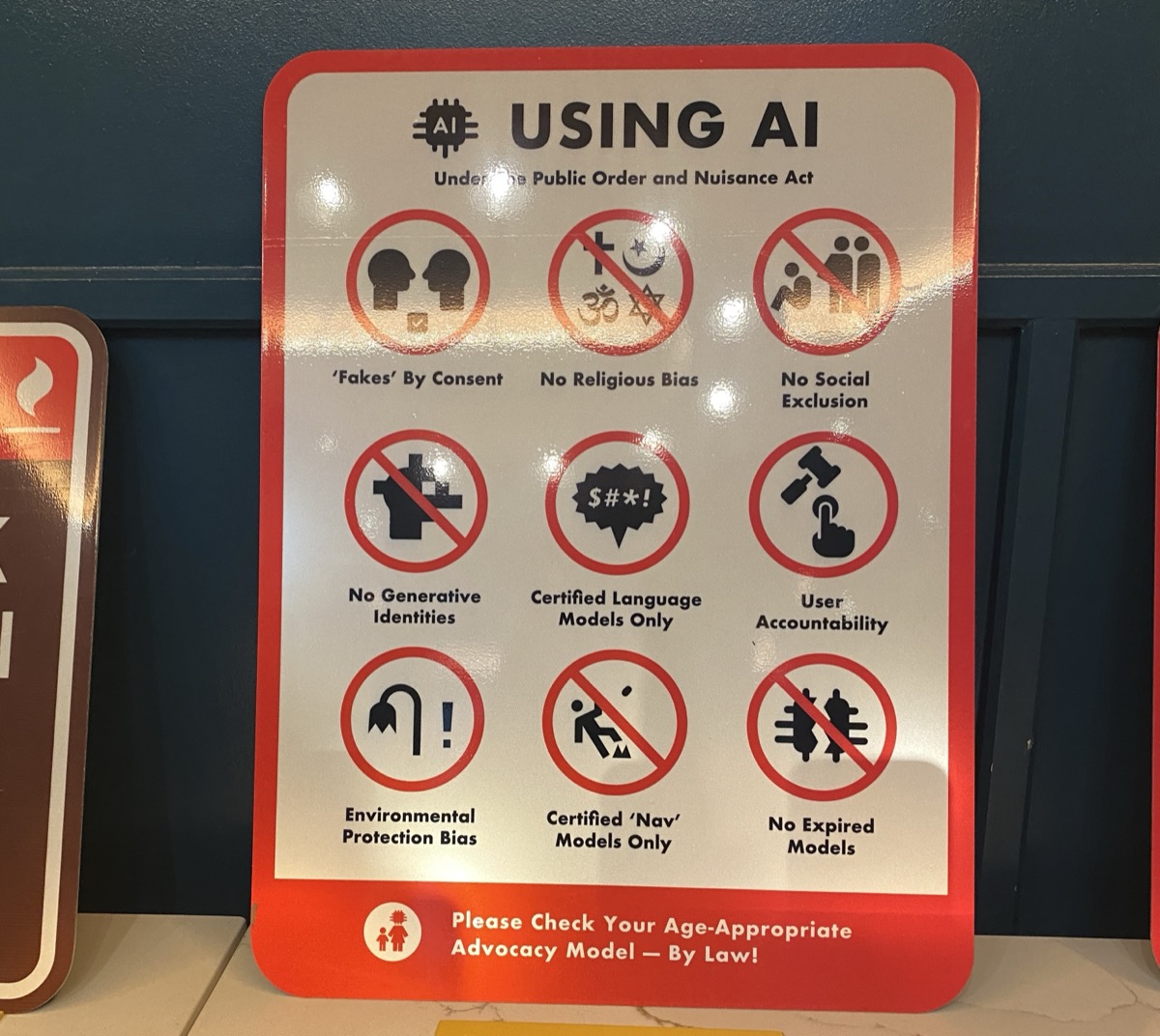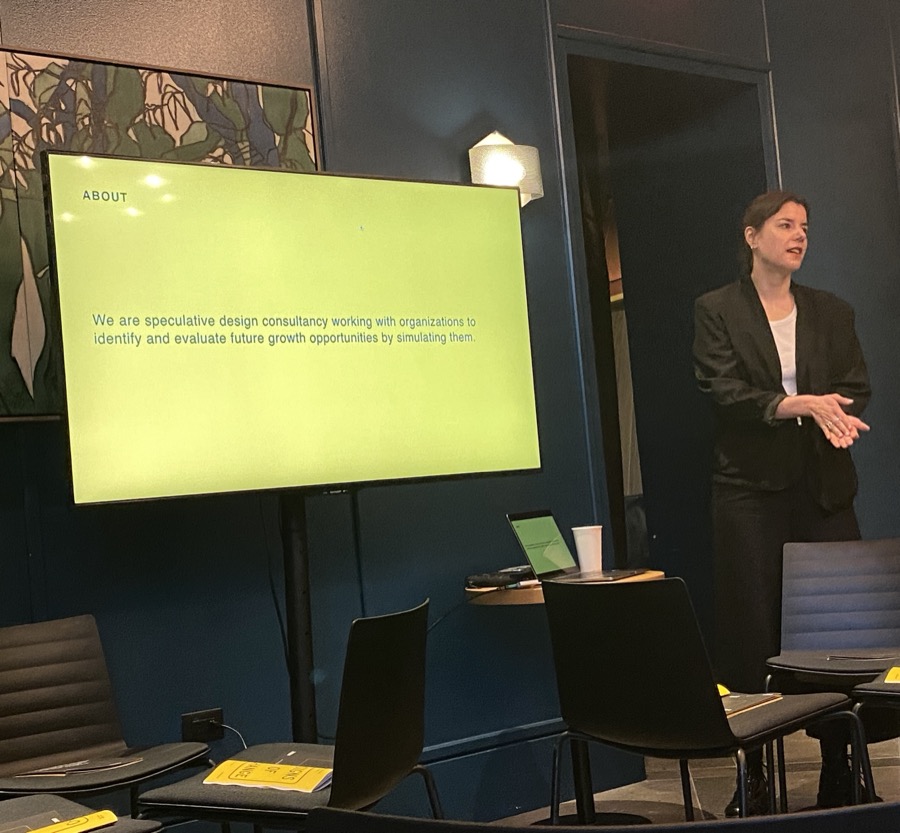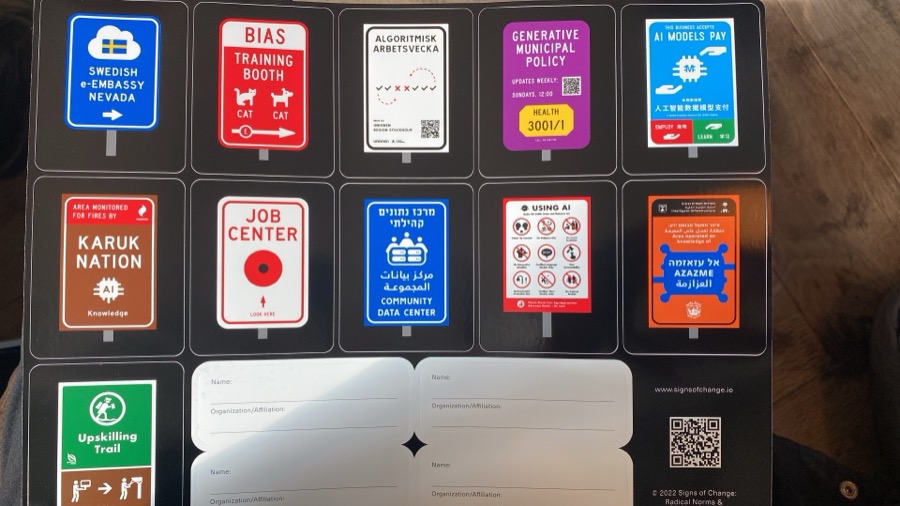
I came to SxSW for a few days, mostly to appear on a panel I helped organize with Avi Bar-Zeev and Andrea Ion Cojocaru. (More about that in a future post.)
While in line to caffeinate just before the Imagine Harder panel on Monday morning, the woman in front of me turned to remark on my “Imagine harder” hat.
Admiring it, she asked if I was going to go to the ‘Imagine Harder’ panel so of course I had to mention that I was, and I was actually on the panel. We had a good laugh at that and introduced ourselves. I had my bag of prizes that I was going to give away during the panel, including a few ‘Imagine harder’ hats, so now Bettina Schwalm has a new hat.
But the real fun was when Bettina introduced me to her practice and invited me to a workshop she was facilitating at the Nordic House at SxSW called ‘Signs of Change’ — literally workshopping possible street signs and how they might help us imagine into possible futures.


The workshop ran for just about 50 minutes, so it was a good tight sprint. Bettina shared an overview of speculative design and shared some really cool examples of how they’ve ‘deployed’ their signs around the world in various contexts.
We then broke up into small groups — I was with Jerri Lynn Hogg and Mark Gilbert. The task was to identify which of the 11 signs they had around the room we found most curious or compelling to engage and wonder about.

We quickly settled upon this sign that indicated that ‘down the road’ is the ‘Swedish eEmbassy’. What the heck, right?
Imagine a world where affinities and socio-political alliances are formed around data and algorithms and are formalized by creating
Fun workshop. Fun artifact. Check out Bettina’s work over at signsofchange.io.











-
Afterwards I sat with Bettina and then Jake Dunagan came by (he was on a panel shortly after the workshop) and we all talked. One reflection was wondering how to avoid having ‘this kind of work’ (call it what you will, but whatever it is the commonality is adoption of an expansive and imaginative mindset to help sense into unexpected possibilities) commoditized to the point where the path is to the ‘Design Thinking’ perscriptive tooling.
-
Another conversation was how do we associate amongst all the approaches, entities, organizations, programs (pedagogical), individuals, and so forth in a mutually reassuring and mutually amplifying way. My own perspective on this is that if the “we” behaves as if ‘this kind of work’ is a zero-sum game, it will eventually lose the open source vibe or ‘scene’ (as Jake citing Brian Eno described). That is the path to avoid, where one feels like we are not all in this effort together, like a big music festival, but rather out for ourselves at the expense of collaboration and coordination.
-
We talked about how we could learn from each other about ways of receiving feedback and understanding what happens and what is felt when one is imagining into possibility and how to talk about that mindset shift.
-
This workshop made great use of materials that were not only high quality, but tangible, active, and fun. A sheet of stickers where you had to move one to the worksheet. We wrote down some answers as ‘results’ of our small group’s collective ideation, which focussed the efforts and also put enough ‘pressure’ upon us to come to consensus around some questions. This is helpful in a workshop setting, particularly when working with new friends and learning about each others’ interests and mindsets. I got a full set of the workshop materials which will be great aids to thinking about how these sorts of articles can be used in future workshops.

This is a fantastic grounding technique. Street signs are easily legible and recognizable indicators of social norms, rules, concretization of policy and thereby implications of culture. A little object that speaks volumes about society at a snapshot in time.